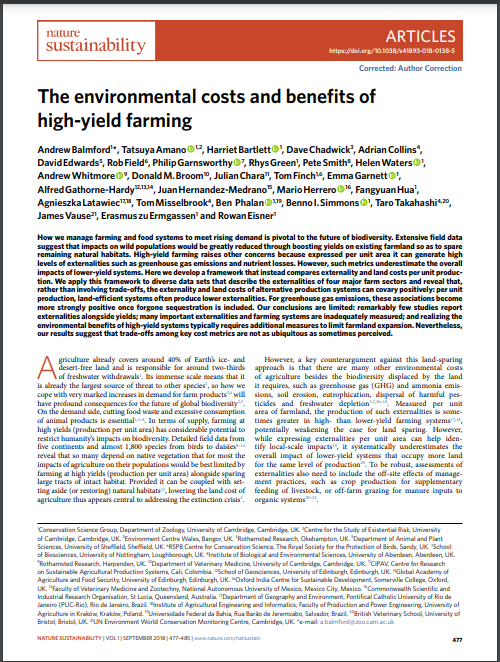The environmental costs and benefits of high-yield farming

Scientific paper by Andrew Balmford & colleagues published in Nature Sustainability 2018:
Abstract:
How we manage farming and food systems to meet rising demand is pivotal to the future of biodiversity. Extensive field data suggest that impacts on wild populations would be greatly reduced through boosting yields on existing farmland so as to spare remaining natural habitats. High-yield farming raises other concerns because expressed per unit area it can generate high levels of externalities such as greenhouse gas emissions and nutrient losses. However, such metrics underestimate the overall impacts of lower-yield systems. Here we develop a framework that instead compares externality and land costs per unit production. We apply this framework to diverse data sets that describe the externalities of four major farm sectors and reveal that, rather than involving trade-offs, the externality and land costs of alternative production systems can covary positively: per unit production, land-efficient systems often produce lower externalities. For greenhouse gas emissions, these associations become more strongly positive once forgone sequestration is included. Our conclusions are limited: remarkably few studies report externalities alongside yields; many important externalities and farming systems are inadequately measured; and realizing the environmental benefits of high-yield systems typically requires additional measures to limit farmland expansion. Nevertheless, our results suggest that trade-offs among key cost metrics are not as ubiquitous as sometimes perceived.
Balmford, A., Amano, T., Bartlett, H. et al. The environmental costs and benefits of high-yield farming. Nat Sustain 1, 477–485 (2018). https://doi.org/10.1038/s41893-018-0138-5



